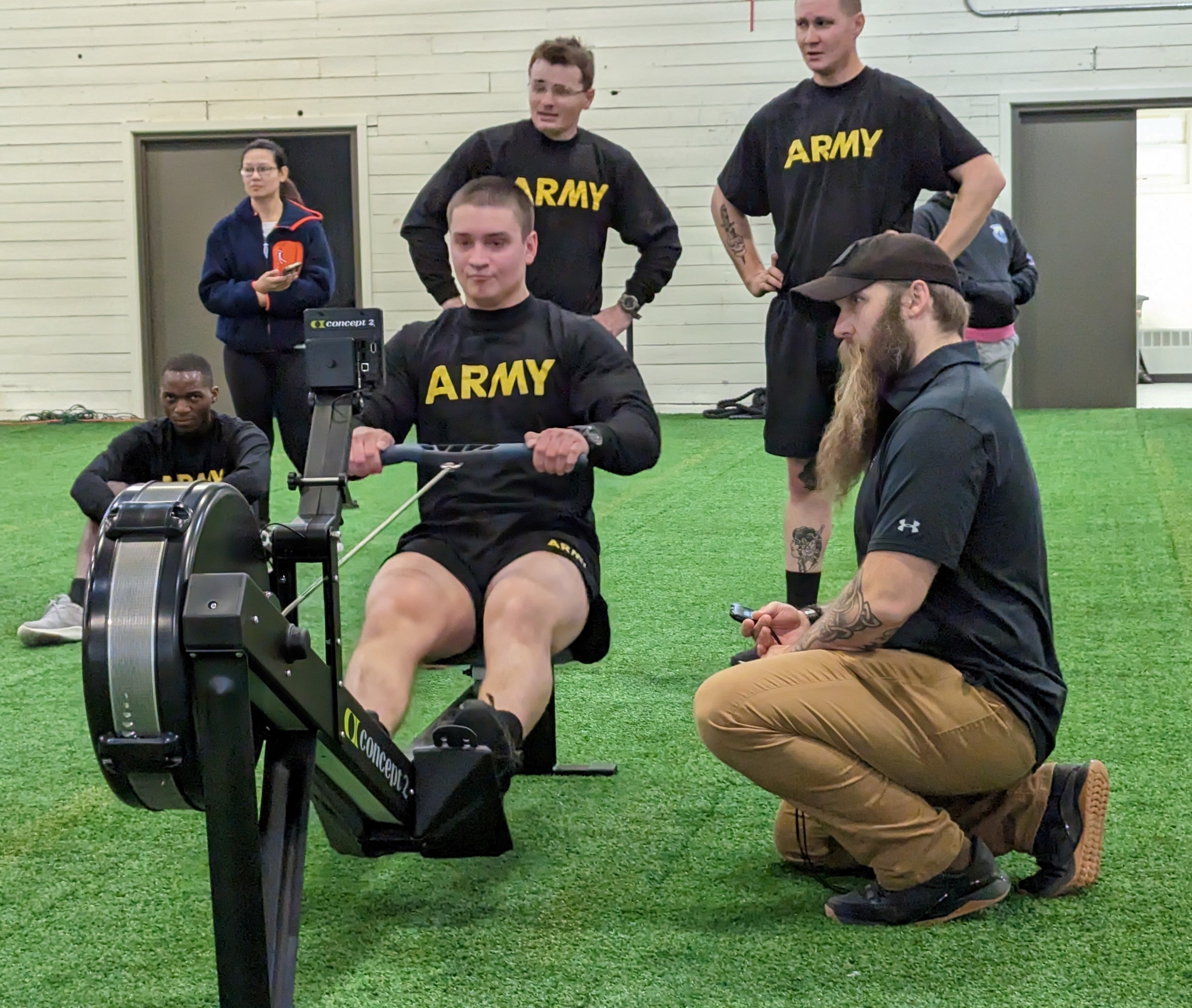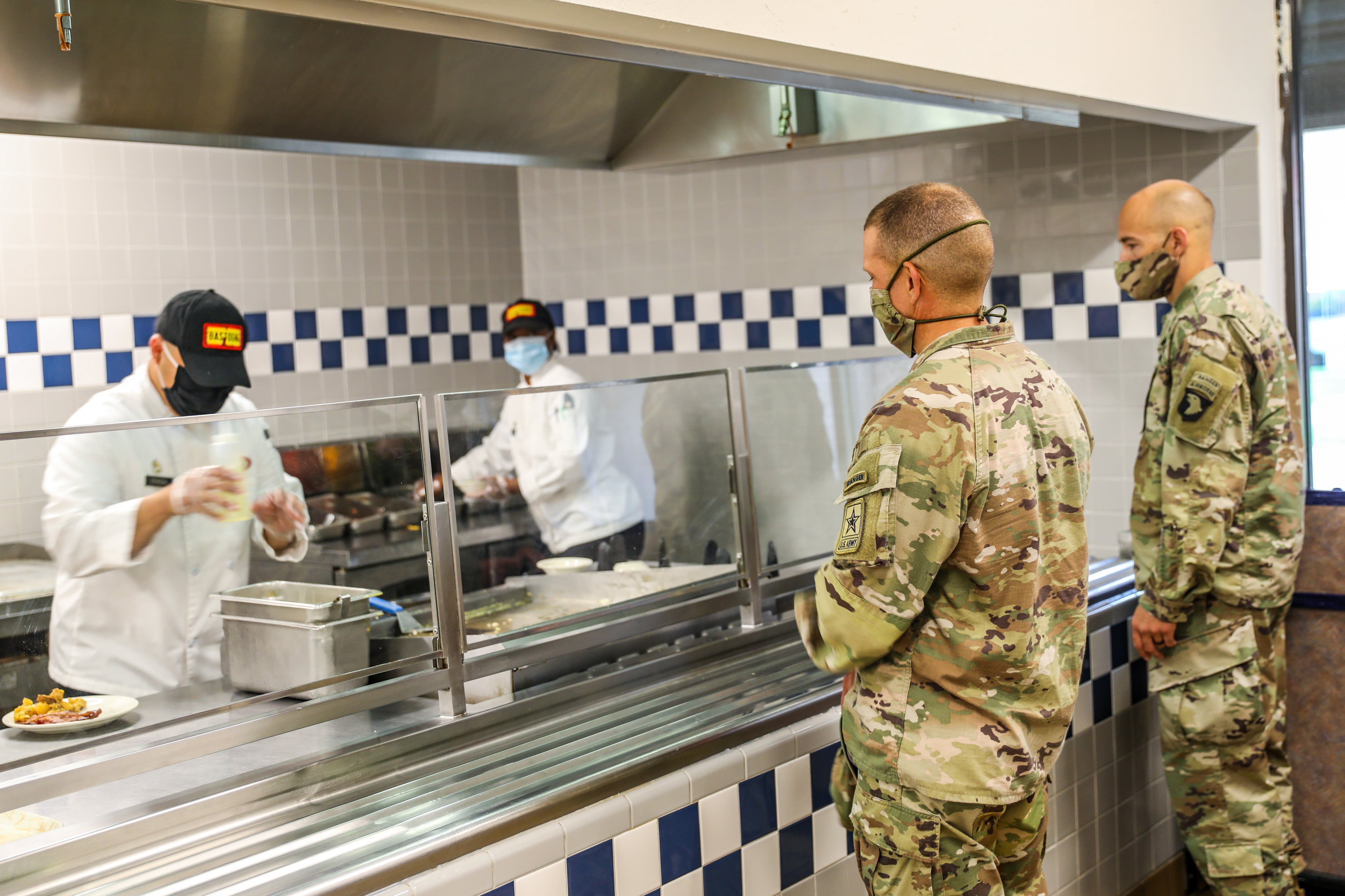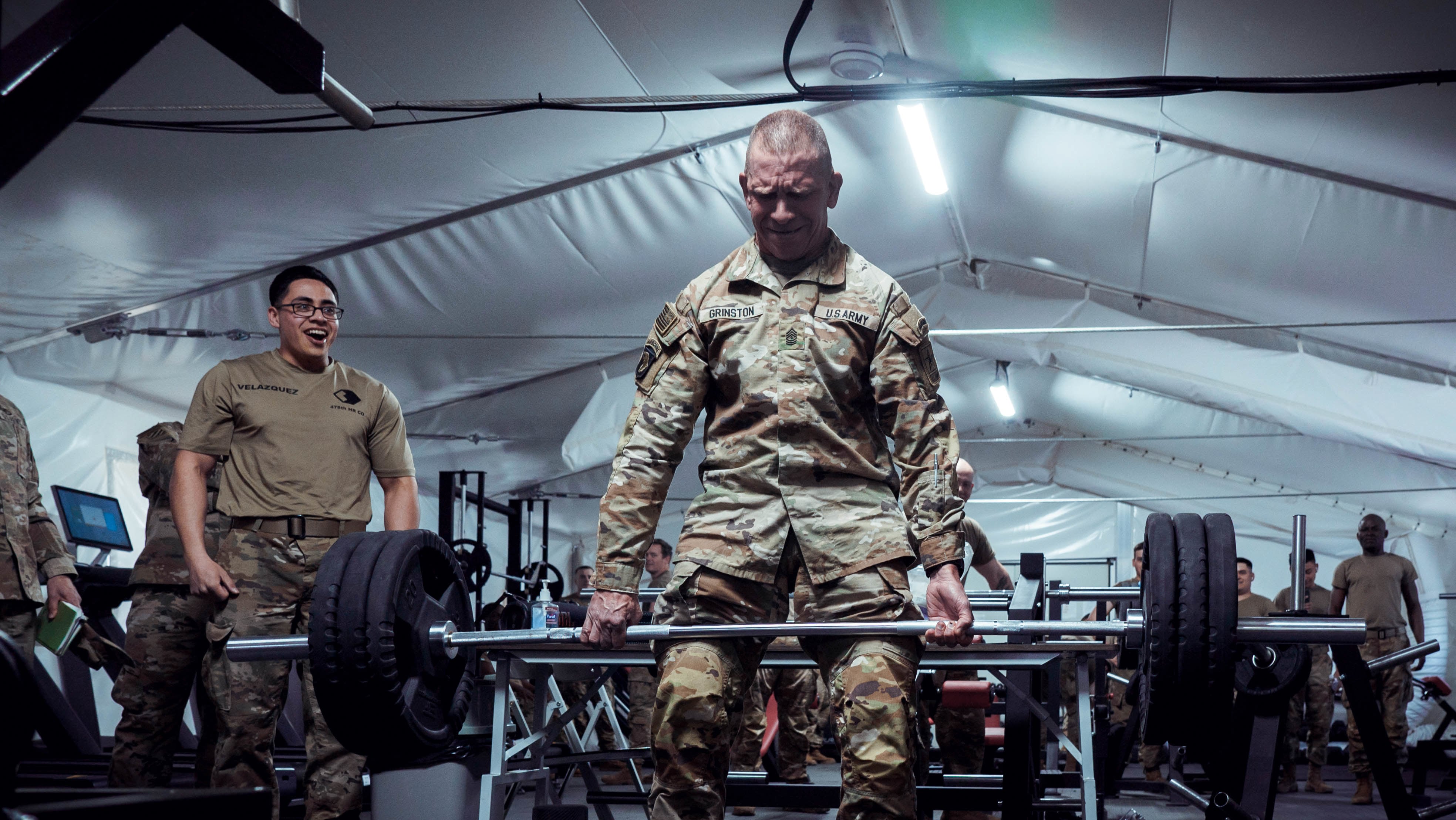FORT EUSTIS, Va. – The Army’s top enlisted soldier has called for leaders to “show up” at both physical training sessions and their soldiers’ dining facilities.
“What I ask you all as leaders is, are you there?” Sergeant Major of the Army Michael Grinston said to an audience of nearly 800 officers and senior enlisted on April 26 at the service’s annual Holistic Health and Fitness Symposium.
“You don’t have to lead it, you don’t have to be up front, you just have to be present,” Grinston said.
Grinston had good company at the event, as Col. Michael Kloepper, commander of the 173rd Infantry Brigade Combat Team (Airborne) drilled into the core of what the new health and fitness program, also called H2F, means for soldiers during another session. And physical fitness, or PT, may not even be the main point.
“PT isn’t about PT,” Kloepper said. “The Army does not have a pushup problem.”
The daily sweat sessions, which now in the H2F era include an all-around look at nutrition, sleep, mental and spiritual help along with physical exercise, are “about leader development,” he said.
RELATED

It also wasn’t the first call out from the sergeant major. Army Times reported at the 2022 symposium Grinston tasked leaders to “get creative” with physical training, incorporating yoga and new moves as well as different times of day than early in the morning to better prepare soldiers for the Army Combat Fitness Test and other demands.
Army Times reported recently that early data shows that among the 28 brigades with the new health and fitness program, suicides are down by more than one-third and other behaviors and negative outcomes such as substance abuse and musculoskeletal injuries have also seen steep declines. That comes as the rates of those unhealthy behaviors have continued to rise in similar brigades without the H2F resources, according to Army data.
As he rattled through each of the health program’s domains, the data appeared to align with Grinston’s message — that if done correctly, the health and fitness program can work as a preventative tool.
“In order to do prevention of things, we have to do better with holistic health and fitness,” Grinston said. “And it doesn’t matter what the thing is on the other side.”
Kloepper’s brigade conducted their own, localized health-focused project, he said. They took some of the “intervention” methods used in the Ranger Assessment and Selection Program and applied them to their own formations for better resiliency training and added some of their own pieces.
The aim was to improve unit cohesion and soldier toughness, the colonel said. The initiative centered on team-building exercises and used chaplains and other experts to build a sense of purpose and accountability in unit events.
The colonel pointed directly at excuses he’s heard from fellow commanders, such as not having enough time to do effective physical fitness training and complete all the tactical training and preparation that’s required of their combat-focused jobs.
Kloepper wasn’t having it.
The physical training and health focus is what made the tactical tasks come together, he said.
“As a brigade commander you take a vested interest in developing a warrior culture,” he said.
And in case anyone listening thought only about sweating out a run or banging out some pushups, Grinston double-tapped the leadership challenge.
“Where do your soldiers fuel their bodies?” Grinston said, referring to on-post dining facilities. “Where are you?”

Grinston recalled how throughout his four-year tenure as the service’s top enlisted soldier he often visits dining facilities and rarely sees anyone above the rank of staff sergeant present.
The soon-to-retire soldier said enlisted leaders especially should see the amount of healthy and sufficient food that fuels their soldiers. And if the options are poor, they should speak up and push for improvement.
The H2F program launched with a pilot study in 2018 and has since grown to 28 fielded brigades with a dozen more scheduled to field teams and equipment this year. The Army’s current schedule would continue at a pace of 10 per year until 110 brigades are fielded by 2030.
However, Army Times recently reported that Maj. Gen. John Kline, commanding general of the Center for Initial Military Training, said during the conference he would soon present a plan for a 15-brigade-per-year rollout to senior leaders for review to speed up delivering the program across the Army.
Todd South has written about crime, courts, government and the military for multiple publications since 2004 and was named a 2014 Pulitzer finalist for a co-written project on witness intimidation. Todd is a Marine veteran of the Iraq War.




